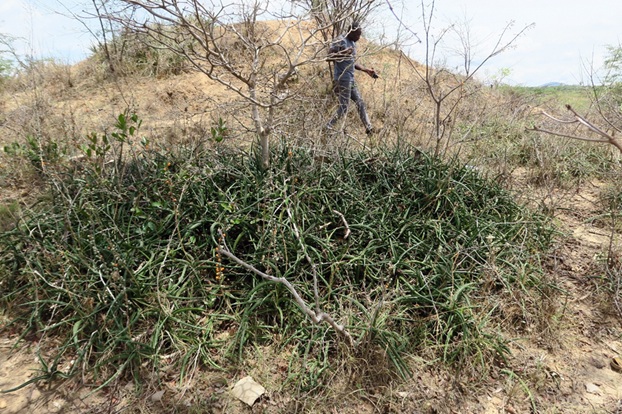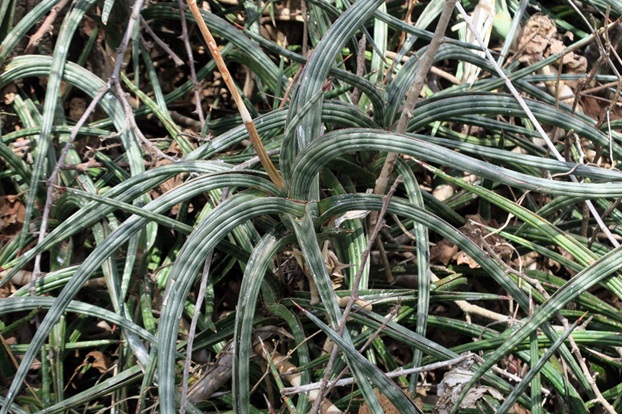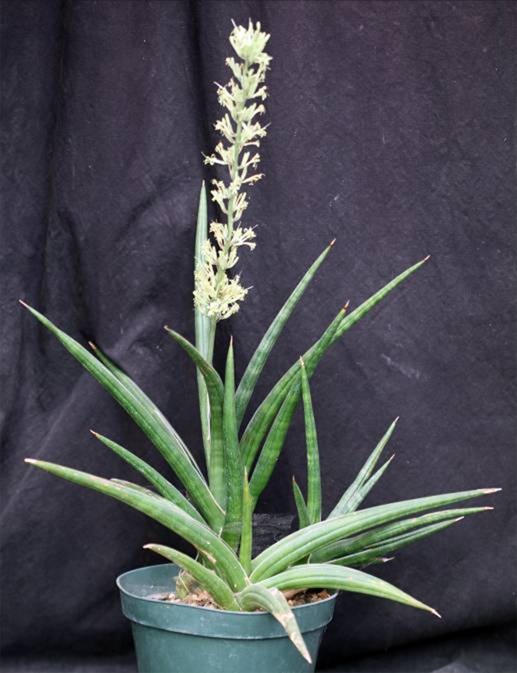| Protologue: |
British Cactus and Succulent Journal 18: 133 (2000). |
| Subgenus: |
Sansevieria |
| Group: |
Sansevieria suffruticosa |
| Etymology: |
Named for Philip E. Downs, a British dentist and succulent plant enthusiast working in Africa who collected this species (Downs 1775). |
| Distribution: |
This species is from northern Malawi with an extension into Zambia. |
| Brief Description: |
This is an acaulescent species that spreads prolifically with stolons. The leaves are rosulate with 6 - 14 per cluster, are cylindrical with a shallow gutter on the upper face nearly the length of the leaf, and are spreading with some downward recurvature. The leaves are 14-45 cm long and 3.2 cm in diameter at their largest, are a bluish-green color with sparse grey-green transverse bands and dark green longitudinal lines on a more-or-less shiny ("waxy") surface that is smooth to slightly rough. The margins are a light brown color and the tip is a sharp spine. The inflorescence is up to 160 cm tall, more typically 30-60 cm tall, and simple with 3 - 5 flowers per cluster. |
| Similar Species: |
This species is the most southerly member of the Sansevieria suffructicosa group, which is centered on East Africa. It bears some resemblance to Sansevieria laevifolia, with its stout, cylindrical leaves with pungent tips, but it generally is a larger, more prostrate plant than that species. It seems to have the sharpest leaf tips of any Sansevieria, which is also distinctive in collections. |
| |
| |

Sansevieria downsii in habitat near Holera Primary School, Malawi.
|
| |

Sansevieria downsii in habitat near Holera Primary School, Malawi, showing more banding to the leaves than what typically is in cultivation.
|
| |

Sansevieria downsii flowering in cultivation. This plant was cultivated from material originally collected in Malawi (Downs 1775).
|

